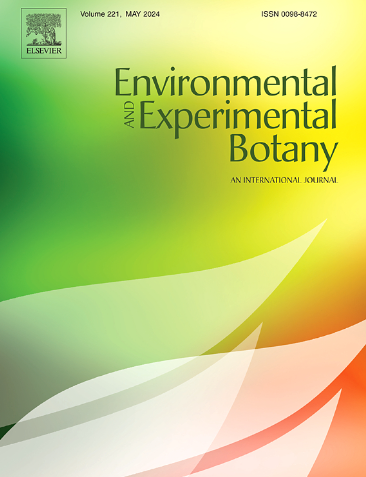Unveiling abiotic stress-induced cell death modalities in the heterocytous cyanobacterium Anabaena sp. PCC 7120
IF 4.5
2区 生物学
Q2 ENVIRONMENTAL SCIENCES
引用次数: 0
Abstract
Regulated cell death (RCD) in cyanobacteria is a post-stress phenomenon necessary for stress adaptability and eco-physiology. However, the sequential modulations in cellular processes conferring regulated forms of death remained elusive. In this study, we evaluated morpho-physiological and biochemical determinants of cell death in a time-dependent manner to understand the sequential cellular events during the process. The death was instigated by exposing heterocytous cyanobacterium Anabaena sp. PCC 7120–1 mM H2O2, 250 mM NaCl and sulfur-starvation. A significant changes in the sequences of morpho-physiological and biochemical events were observed in different stress conditions. Upon H2O2 treatment rapid oxidation of cytosol and disintegration of cell envelop was observed prior to DNA fragmentation. On the other hand, salt-stress and sulfur-deprivation induced phosphatidylserine (PS) externalisation, gradual rise in redox potential, and DNA fragmentation prior to membrane disintegration. Furthermore, we analysed the time-dependent expression of five orthocaspases, the putative executioner of cyanobacterial cell death. Out of five, only two orthocaspases anaOC2 and anaOC6 exhibit expression pattern synergistic and coherent with DNA fragmentation in salt treated and sulfur-deficient cells. However, no orthocaspases expression was evident during H2O2 treatment. Considering these parameters, H2O2 induced death was regarded as accidental cell death (ACD), whereas in salt and sulfur stresses mediated two different RCD subroutines, which were orthocaspases-dependent. Overall for the first time, we demonstrated the existence of three death modalities in cyanobacteria based on sequential cellular events and relative expression of orthocaspases.
揭示非生物应激诱导的异细胞蓝藻水蓝藻sp. pcc7120细胞死亡模式
蓝藻调节细胞死亡(RCD)是一种应激后现象,是适应应激和生态生理所必需的。然而,在细胞过程的顺序调节赋予调节形式的死亡仍然难以捉摸。在这项研究中,我们以时间依赖性的方式评估细胞死亡的形态生理和生化决定因素,以了解过程中连续的细胞事件。通过暴露异细胞蓝藻Anabaena sp. PCC 7120-1 mM H2O2, 250 mM NaCl和缺硫诱导死亡。在不同胁迫条件下,形态生理生化事件序列发生了显著变化。在H2O2处理下,细胞质迅速氧化,细胞膜解体,DNA断裂。另一方面,盐胁迫和硫剥夺诱导磷脂酰丝氨酸(PS)外化,氧化还原电位逐渐升高,以及膜崩解前的DNA断裂。此外,我们分析了五种正切酶的时间依赖性表达,这是蓝藻细胞死亡的假定刽子手。在盐处理和缺硫细胞中,只有两种正羧酶anoc2和anoc6表现出与DNA片段协同一致的表达模式。而在H2O2处理下,正casaspase未见明显表达。考虑到这些参数,H2O2诱导的死亡被认为是意外细胞死亡(ACD),而在盐和硫胁迫中介导了两种不同的RCD子程序,这是正磷酸酶依赖的。总的来说,我们首次证明了蓝藻中存在三种基于顺序细胞事件和正磷酸酶的相对表达的死亡模式。
本文章由计算机程序翻译,如有差异,请以英文原文为准。
求助全文
约1分钟内获得全文
求助全文
来源期刊

Environmental and Experimental Botany
环境科学-环境科学
CiteScore
9.30
自引率
5.30%
发文量
342
审稿时长
26 days
期刊介绍:
Environmental and Experimental Botany (EEB) publishes research papers on the physical, chemical, biological, molecular mechanisms and processes involved in the responses of plants to their environment.
In addition to research papers, the journal includes review articles. Submission is in agreement with the Editors-in-Chief.
The Journal also publishes special issues which are built by invited guest editors and are related to the main themes of EEB.
The areas covered by the Journal include:
(1) Responses of plants to heavy metals and pollutants
(2) Plant/water interactions (salinity, drought, flooding)
(3) Responses of plants to radiations ranging from UV-B to infrared
(4) Plant/atmosphere relations (ozone, CO2 , temperature)
(5) Global change impacts on plant ecophysiology
(6) Biotic interactions involving environmental factors.
 求助内容:
求助内容: 应助结果提醒方式:
应助结果提醒方式:


